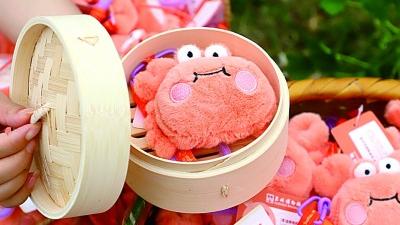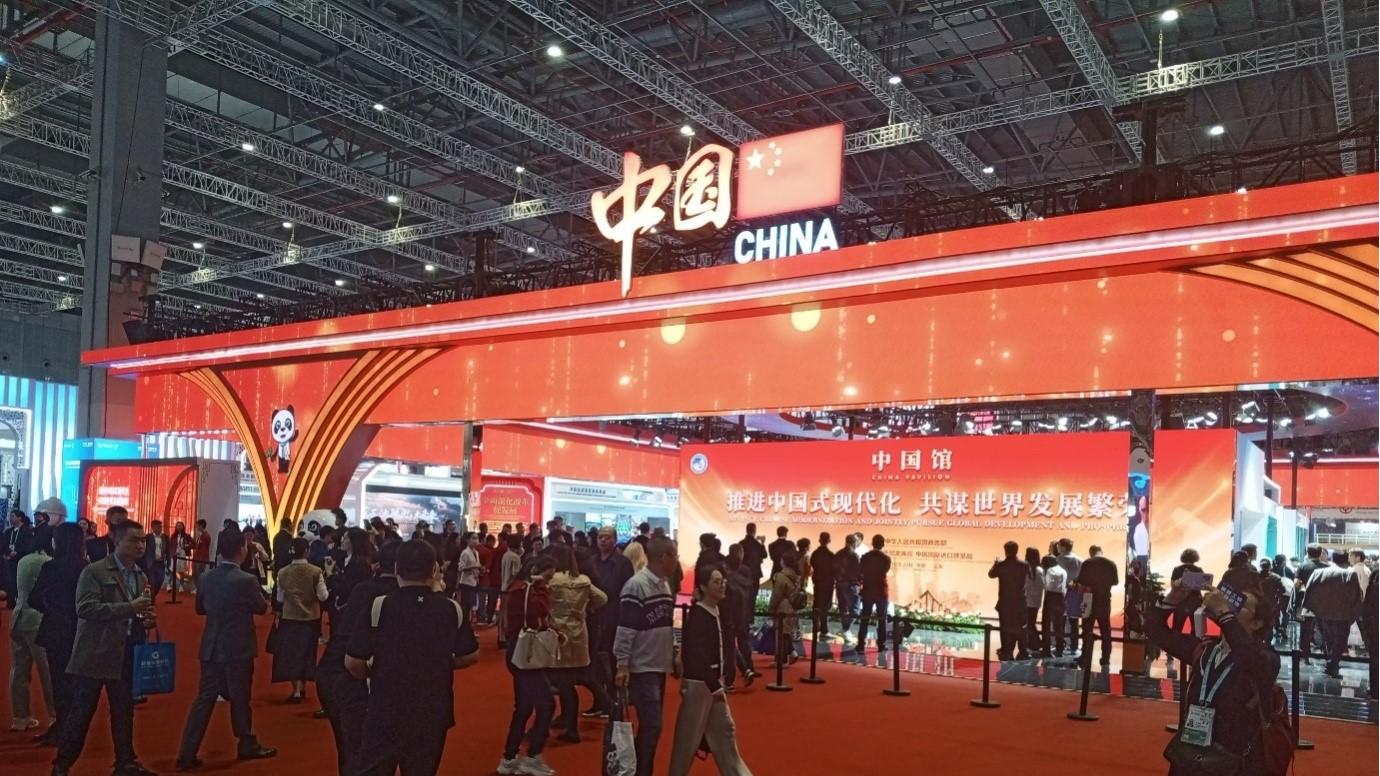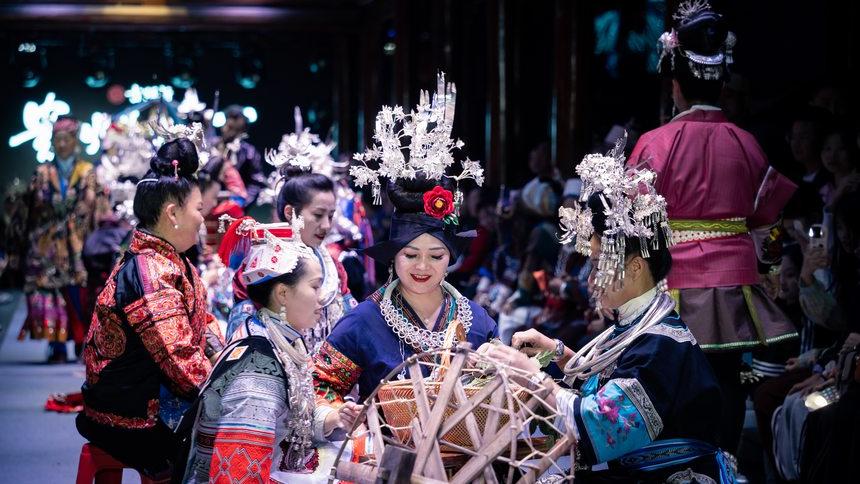Sportswear manufacturing weaves tapestry of prosperity for small township in SW China's Guangxi
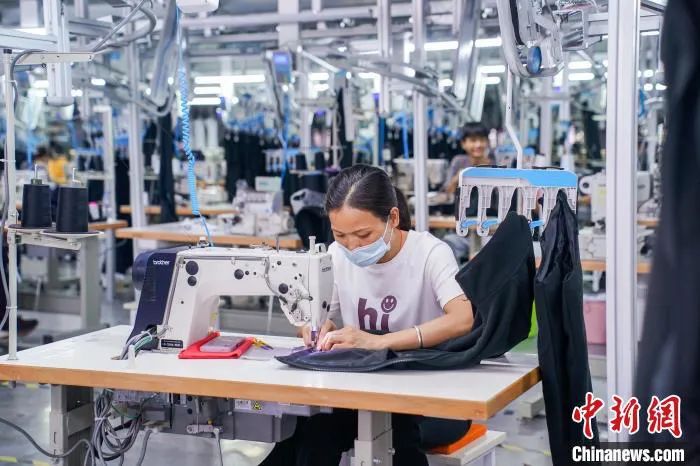
File photo shows workers as they make clothes in a workshop.
Mule township in Guiping city, south China's Guangxi Zhuang Autonomous Region, boasts a thriving textile and clothing industry.
The small township is home to over 500 textile and clothing enterprises, with 11 of them being large-scale enterprises each with an annual main business turnover of at least 20 million yuan ($2.81 million).
Local businesses based in the township hold 473 valid registered trademarks and have created 108 independent brands.
With an annual output of more than 300 million sets of clothes, the township exports products to regions including Europe, America, Southeast Asia, and Africa.
Beginning in the early 1980s, the textile and clothing industry of the township, a traditional advantageous industry of the locality, plays a crucial role in sustaining the local people's livelihood.
In the early 1990s, residents of Mule township noticed a lack of leather products in the market and transitioned from repairing clothes to producing ready-to-wear leather jackets, windbreakers, casual pants, and other products, and started to taste the sweetness of success in the clothing industry.
Between the late 1990s and the early 2000s, the number of clothing companies in the township surpassed 100, leading to the gradual establishment of a garment production base and a significant clothing industry.
The clothing industry officially became the pillar industry of Mule township, earning it the reputation as an "emerging hub of clothes manufacturing."

Photo shows workers as they make clothes in a workshop in Guiping city, south China's Guangxi Zhuang Autonomous Region. (Photo courtesy of the publicity department of the Communist Party of China Guiping municipal committee)
Guangzhou city in south China's Guangdong Province, as the largest and most vibrant clothing wholesale market in the country, became the prime destination for business people from Mule to seize lucrative business opportunities.
Batch after batch of people from Mule township have gone to Guangzhou to set up stalls on Shahe Street in the city, displaying a variety of samples to attract domestic and foreign buyers.
While being delighted by the increasing number of orders, clothing enterprises in Mule township were surprised to discover that sportswear was the category with the highest demand.
Following the typical supply and demand logic of producing what the market needs, enterprises and factories in Mule township began to focus on producing sports clothing such as basketball uniforms and football jerseys, successfully tapping into the national market and even exporting to countries like Germany and Italy.
In 2016, the township was awarded the title of "China's famous township of sportswear" by the China National Textile and Apparel Council and the China National Garment Association.
So far, Mule township has developed a complete industrial chain encompassing various links, from spinning, weaving, dyeing, embroidery, and elastic band production, to design and sale, seamlessly connecting production, supply, and marketing.
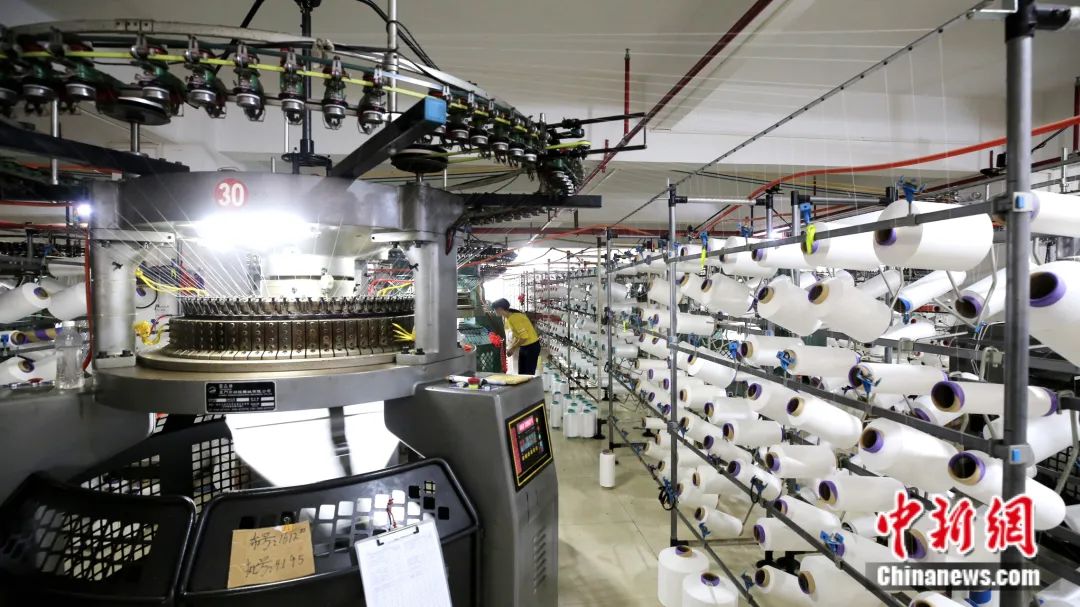
Photo shows automated machines as they weave cloth in a workshop in Guiping city, south China's Guangxi Zhuang Autonomous Region. (Photo courtesy of the publicity department of the Communist Party of China Guiping municipal committee)
Thanks to online marketing, technological upgrades, and management improvements, Mule's clothing industry has embraced another upgrading, with clothing enterprises enjoying booming business across the township.
Last year, Mule township achieved an industrial output value of 7.46 billion yuan, with nearly 50,000 migrant workers striving to weave their dreams into reality in the township.
Today, local clothing enterprises are embracing intelligent transformation for a brighter future.
"We are gradually shifting toward intelligent manufacturing in a comprehensive manner, from product research and development to process improvement, which can enhance our brand competitiveness in the market," said Li Linhui, whose clothing business has successfully transformed from a family workshop model into intelligent manufacturing.
Pan Yongcong, another clothing business owner from Mule township, has also successfully transformed his company from a family workshop to a large company boasting a digitalized factory and a combination of online and offline marketing channels.
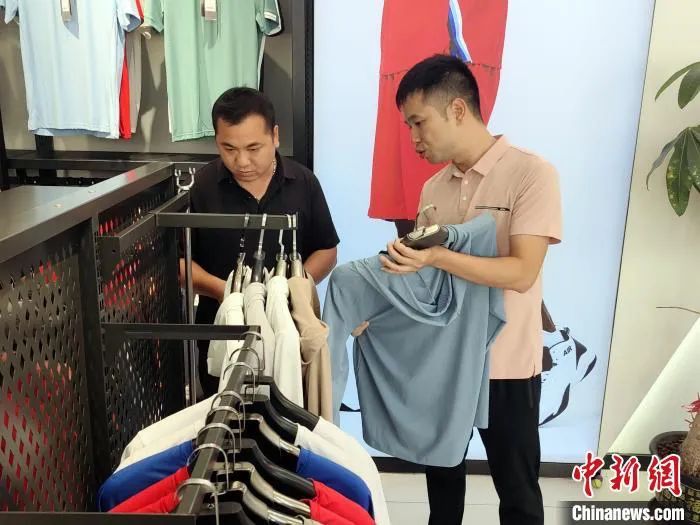
Pan Yongcong, owner of a clothing business in Mule township, Guiping city, south China's Guangxi Zhuang Autonomous Region, introduces clothes to a customer. (Photo/Tu Lisha)
After taking over his father's clothing business at the age of 22 in 2007, Pan opened up a new channel for foreign trade wholesale due to his keen sense of the foreign trade market.
Different from the pace of the older generation, Pan noticed the importance of digital management and technological innovation.
He then expanded his factory, received training, adjusted development strategies, built a digitalized factory, and established online and offline sales channels.
"We have shifted from pursuing product quantity to becoming a factory of branded products. This transformation has elevated the quality of our products several notches, winning the favor of domestic and foreign customers. In 2019, our annual output reached 3 million pieces, with half sold domestically and half internationally, generating sales of 75 million yuan," Pan said.
Centering around the goal of "building the largest sportswear production base in China," Mule township has promoted a model featuring collaboration among local branches of the Communist Party of China (CPC), platform companies, and cooperatives, in a bid to help enterprises overcome difficulties and increase income for local residents, according to Liu Yongyi, secretary of the CPC Mule township committee.
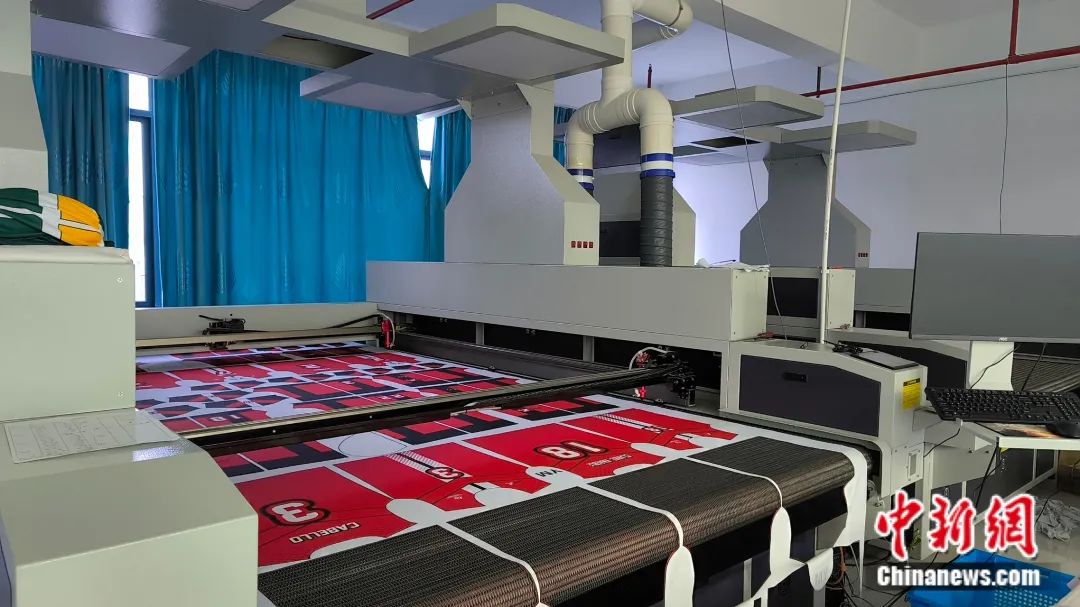
Digital printing equipment works in a digitalized clothing workshop in Guiping city, south China's Guangxi Zhuang Autonomous Region. (Photo courtesy of the publicity department of the Communist Party of China Guiping municipal committee)
The model has helped form an industry cluster and promote the standardized development of clothing enterprises, Liu said, noting that the township has made active efforts to create and promote local independent clothing brands and enhance the reputation of Mule township's textile and clothing industry, thus empowering rural revitalization.
In May 2020, Guiping city initiated a project to establish an industrial park dedicated to the advancement of the local textile and clothing industry, aiming to further stimulate its development.
With a total planned area of 15,000 mu (1,000 hectares) and a total investment of 7.5 billion yuan, the industrial park is scheduled to be constructed in three phases. Currently, the construction of the startup area of the first phase is underway, and it is expected to be mostly completed by the end of 2025.

Photo shows a textile and clothing industrial park under construction in Guiping, a county-level city under Guigang city, south China's Guangxi Zhuang Autonomous Region. (Photo courtesy of the publicity department of the Communist Party of China Guigang municipal committee)
The industrial park is equipped with facilities serving all links of the industrial chain, including a research and development center, testing center, as well as facilities for fabric production, dyeing and finishing, clothing accessories, clothing processing, trade, smart logistics, and comprehensive services.
A 160,000-square-meter standard factory building in the first phase is expected to be completed and put into use this year.
Photos
Related Stories
Copyright © 2024 People's Daily Online. All Rights Reserved.







